Smugglers, revenue officers and partisans in Val Vigezzo, during the strange autumn of 1944.
During the Republic of Ossola, the officers of the Italian finance police switched sides and joined the ranks of the Resistance: the son of one of them tells the story of those days, of his father’s exile, and of the solidarity among the “smugglers”
“The letters of my father, a revenue officer interned in Switzerland, came to us thanks to the smugglers.” It was quite a strange alliance, on those days in 1944-45, in Val Vigezzo, which had become the scene of the war between the fascists and the partisans.
In the “forty days of freedom” of the Republic of Ossola, the officers of the Italian finance police, quite unintentionally, switched to the side of the Resistance and participated in the Battle of Bagni di Caraveggia, the day when the fascists threatened to invade Switzerland. And then they lived months of exile in Switzerland.
Gianfranco Porcu carries Val Vigezzo in his heart, even though, today, he lives in Sardinia (he has actually lived there for 75 years). His father, Antonio Porcu, was a lance corporal in the Italian finance police, first appointed to the barracks in Re, and then to the lieutenancy of Santa Maria Maggiore. “I attended all of the years of primary school in Santa Maria Maggiore,” said Gianfranco, who, in his mind and in his accounts, still has a clear and detailed memory of those months of war, which devastated Ossola and overwhelmed the lives of the revenue officers and their families. (In the photo, Gianfranco is the child, his father is the revenue officer on the right)
There were about twenty revenue officers from Santa Maria. “They were all Southerners, Sardinians and Sicilians. There was also one from Veneto, Bernardis, who had a baby face. We used to go looking for chestnuts together.”
They were days of calm, before the war, even though Lance Corporal Antonio Porcu, who was born in 1905, had to fight against the “smugglers”. “Craveggia, Toceno and Santa Maria: there were all smugglers of salt and cigarettes. The “lines” of contraband began in Bagno di Craveggia and ended in Alpe Blitz: the revenue officers lay in wait to find them… they played cat and mouse. Sometimes the smugglers approached me: they gave me cigarettes for my father, but he didn’t accept them.”
The war begun by Mussolini in 1940 did not initially change the scenery of Val Vigezzo. “They were the revenue officers: they were armed, they had machine guns and ’91 rifles of reduced calibre. I remember they had replaced the lighter cartridges with the larger calibre.” But, in 1943, the Germans came.
The Finance Police in the whirlwind of the civil war
On 8 September 1943, when the armistice was announced, the German Wehrmacht and SS troops started to disarm, and to capture and deport to Germany ten of thousands Italian soldiers, who had been left without orders and in the lurch, after the King had fled Rome. The Germans did not deport the carabinieri or Finance Police (at least, not initially, although, thousands of carabinieri in Rome were later sent to prison camps).
The unarmed finance police were kept in service, to continue their work of economic policing and to stop the “black market” of foodstuff in the towns.
“One day, the Germans arrived in Santa Maria Maggiore, and occupied the Oscella Hotel; they took away the Finance Police’s weapons and ammunition. I remember it was an affront to my father when they took away his stars. Then, with the birth of the Republic of Salò, the Germans returned the weapons and the revenue officers returned to duty.”
The Finance Police returned to fulfilling their duty, observed by the Zollgrenzschutz, the German border guards, who took control of the border crossings, hunting (among other things) any Jews on the run, who smugglers and Vigezzina railwaymen let pass. Meanwhile, the Finance Police Heads had contact with the Resistance and with the Northern Italy National Liberation Committee, based in Milan. In some cases individual revenue officers became partisans, as Emilio Murciano did in Val Vigezzo (there is also the well-known case of Umberto Lazzaro Bill, the man who recognised and captured Mussolini, when he was on the run). In other cases, they joined the partisan ranks in small compact groups, but the majority remained in service; without taking part in activities against the Resistance, and, in some cases, even collaborating clandestinely, for example, as the Sardinian Barchisio Mastinu did between Cusio and Ossola.
German suspicion was inevitable; in August 1944, the finance police were removed from all of the border crossings, and faced the risk of deportation to Germany, as had happened to some carabinieri, it was suggested that an independent partisan formation be created in Ossola, which would be entrusted to the command of Colonel Alfredo Malgeri, the Commander of the Milan legion.
Finance Police in the Republic of Ossola
At that very time, in early September 1944, the partisan forces of the independent Cesare Battisti and Perotti Brigades (advancing from Cannobio) freed Val Vigezzo; this was the “spark” that led to the fascists being driven from Domodossola.
In the Republic of Ossola, together with the Municipal Guards of Domodossola and other men, the finance police joined the “National Guard”, led by Attilio Moneta, a retired colonel from Malesco, who was responsible for maintaining public order.
“In those days, the Finance Police was caught in the middle,” said Antonio Porcu’s son. “Many of the partisans of Moscatelli were former smugglers, and the finance police found themselves serving with them.” For one month, Ossola experienced an extraordinary period and, at the same time, returned to partial normality, with the lights going on again after four years of darkness imposed by the war.
It was a strange scene, as seen through the eyes of the child, Gianfranco Porcu. “One day, in the square in front of Bar Gennari, I saw a car bearing the name of ‘Lieutenant Franco’, one of the Matteotti Brigade. I approached him and said ‘My name’s Franco, too.’ I remember the football matches in the fields near Santa Maria, among the communists, those of Matteotti and those of Di Dio, which the others called ‘the pious work’”. However, there were dangers just around the corner. “The finance police were serving at the checkpoint in Santa Maria, at the Oscella. One night, a car passed by and a burst of gunfire mowed down a revenue officer; perhaps they had mistaken him for a fascist, because of his grey-green uniform. Captain Arcangeli, who was in command in Santa Maria, reacted and threatened to withdraw his men.”
The experiment in the Free Zone of Ossola lasted 40 days. In the first few days of October, the Nazi-Fascists went on the counter-attack, with more than 4000 men supported by the artillery; while the partisans caused a lot of trouble on the plain of the River Toce, in Val Cannobina, the Germans and Fascists advanced quickly, partly because of the lack of discipline of the partisan divisions (in the “Cesare Battisti” and “General Perotti” Brigades, a lot of very young, untrained lads had also enlisted), partly because of the bad weather, which made liaising and watching the enemy movements difficult.
Antonio Porcu, of the Finance Police, in a family photo, holding a ’91 rifle
On 11 October, the Cannobina front surrendered; on 12 October, at the Finero gorge, Alfredo Di Dio, the commander of the Italian partisans of Valtoce, and Colonel Moneta also died.
The partisans retreated in a disorderly manner and fear also drove many inhabitants of Val Vigezzo to seek refuge in Switzerland (especially those who had sided with freedom). “The finance police also left, after being gathered in the square of Santa Maria. They took up weapons and kit, and half a bag of rice each. My father wanted to take us with him, but my sister was four years old and my mother didn’t want to,” remembered Gianfranco Porcu. Almost going back to being the enterprising child he was, he added, “I was ready to go.”
Battle on the border: the battle at Bagni di Craveggia
“Behind them, there were the fascist troops coming from Finero: it was a race for who would arrive first at Bagni di Craveggia. There were the barracks of the Finance Police, but my father told me that it had already been emptied of blankets and coats.” There, the column was blocked by Swiss soldiers, who had precise orders: civilians could enter, partisans could enter only when their lives were in danger.
On 17 October, the Fascists arrived in the basin between the mountains, between Vigezzo and the Onsernone Valley: “The X Mas column was well armed: they were high up, they fired down, because the Bagni was low down, in the valley. The Swiss protested, but the fascists kept on firing; they even hit those who were already in Swiss territory. Near my father, there was Commander Bianchi, who was wounded in the sacrum” (in the first minutes of the video below, Adriano Bianchi recounts the battle of 17-18 October 1944, while visiting Bagni di Craveggia).
“My father said, ‘Here, they’re going to kill us all.’ He fired his ’91 rifle at the fascists, hit one of them and saw him fall over his machine gun. Then, they finally received the order to enter Switzerland.” The soldiers’ gunfire chased them also across the borderline, the bullets killed Lieutenant Federico Marescotti. Once they were across the border, “the Swiss took them away, because the fascists wanted to enter in and get them.” The Swiss Captain, Augusto Rima, who had already suggested to the partisans what side to take, got the grenadiers, with their heavy weapons, on his side, to stop the fascists from crossing the border (in fact, the Germans had already given up).
From imprisonment to Liberation
The expatriated partisans were received in a makeshift manner in the area (“Certainly not in a hotel; they ended up in stables, on straw”) and then were moved into internment camps set up by Switzerland for the foreign soldiers. The revenue officer Antonio Porcu was transferred to Locarno, then to Gurnigel and Bätterkinden, in the Canton of Bern, “in that area, he also worked in the fields, in order to have more to eat.”
The story of Antonio Porcu, which has been passed on by his son, tells us also about the incredible, human solidarity that, during those months, allowed the revenue officers to keep in contact with their families, who had remained in Italy. “They kept in touch through ‘la signora Aida’ in Bagni di Craveggia (Aida Tarabori was a Swiss citizen, ed.); they wrote a letter and sent it in a double envelope. On the larger envelope, there was the address of Aida Tarabori: when it arrived in Bagni di Craveggia, she would open it, and inside, would find the smaller envelope with our address. The letters were given to the smugglers, who delivered them.” Porcu and the other revenue officers were also sentenced to death for desertion, by the fascist court in Turin.
In the meantime, during the hard winter of 1944-45, the command of the Finance Police had given up on the idea of forming a partisan brigade, had increased employment in conspiracy and espionage activities, and, above all, had agreed with the CNLAI (the top authority of the Resistance) to work as an organised unit to finally force out Fascism.
On 25 April 1945, the insurrection began in the North of Italy; on 26 April, at dawn, the battalions of the Finance Police in Milan left their barracks and, as planned, they occupied the Prefecture and other headquarters of Republican power; this provided an essential contribution for the Liberation of Milan and for the transition of the civil administration of a densely populated city that had been damaged by five years of war.
The revenue officer, Antonio Porcu, came back from Switzerland in August 1945, “covered with lice” and with a death sentence for desertion still pending (of course, it was later cancelled). His family had also suffered difficult times, a fearless Gianfranco explained, years later. “After escaping the fascists in September 1944, people entered the houses of the wealthy in Santa Maria; we also went, and then the villagers reported us for pillaging. In 1945, an armed partisan came, and with hand grenades on his belt, said, ‘Come with us.’ I said, ‘We were hungry, we’ve only stolen potatoes.’ And in the end, nothing happened, but when my dad found out … he wanted to shoot us,” he said a smile.
The war had really ended. “And my father decided to go to Sardinia. At the end of 1945, we left for Cagliari; we travelled during the night, the bridges were still destroyed and there was everything around, luckily my father was wearing a uniform. In Civitavecchia, we set off on the steamboat (‘il vapore’ as we called it at that time), there weren’t any ferries. Then my father served in Cagliari, in Bosa and finally in Sassari, where he was discharged.”
Gianfranco Porcu, 86, still lives in Sassari, even though he is still in contact with Val Vigezzo; every photo on Facebook reminds him of a story of those distant years, hard but full of events. And even today, when he sees a photo of Alpe Blitz, he remembers the smugglers, the “enemies” of revenue officer Antonio Porcu, who brought his children their father’s letters from Switzerland.
Translated by Denise Mura, Charlotte Ovalle, Michela Villa, Micol Viviani
Reviewed by Prof. Rolf Cook
La community di VareseNews
Loro ne fanno già parte
Ultimi commenti
Emanuele Zanetti su Motociclista di Ferno ucciso da un orso in Romania
GrandeFratello su Superate le 700 firme per la petizione sul recupero del Grand Hotel Campo dei Fiori di Varese
Felice su Motociclista di Ferno ucciso da un orso in Romania
Stefano64 su Neil Young torna dopo l'enorme successo di Harvest: ma non è il disco che tutti si aspettano
Alessandro Zanzi su Superate le 700 firme per la petizione sul recupero del Grand Hotel Campo dei Fiori di Varese
Felice su La bibliocabina, la panchina e il cane che fa pipì. A Fagnano Olona scoppia la polemica





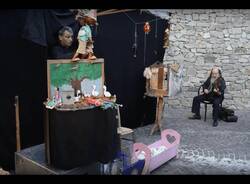
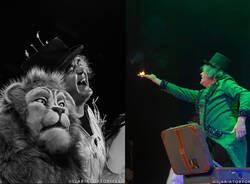

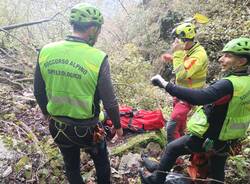
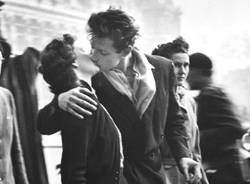

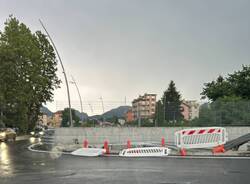

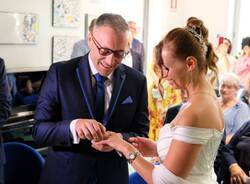

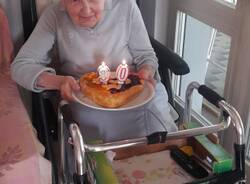




Accedi o registrati per commentare questo articolo.
L'email è richiesta ma non verrà mostrata ai visitatori. Il contenuto di questo commento esprime il pensiero dell'autore e non rappresenta la linea editoriale di VareseNews.it, che rimane autonoma e indipendente. I messaggi inclusi nei commenti non sono testi giornalistici, ma post inviati dai singoli lettori che possono essere automaticamente pubblicati senza filtro preventivo. I commenti che includano uno o più link a siti esterni verranno rimossi in automatico dal sistema.